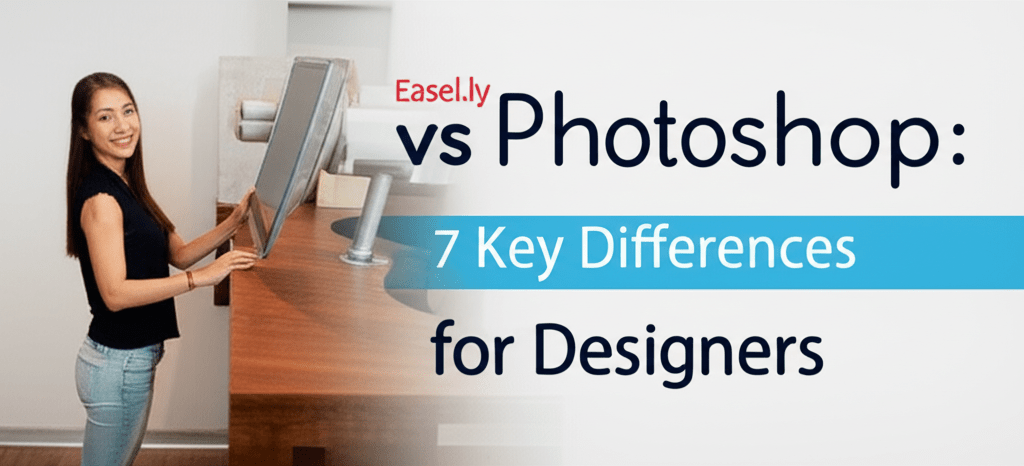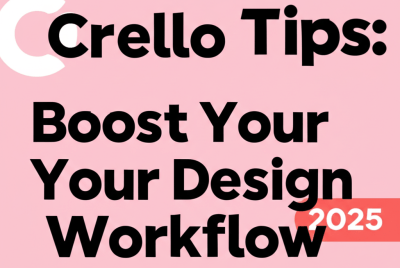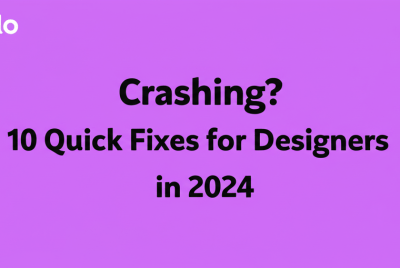Easel.ly vs Photoshop: 7 Key Differences for Designers
Choosing the right design tool can feel like a big decision, especially when you’re weighing options like Easel.ly vs Photoshop. Both are fantastic creative tools, but they shine in different areas. Here’s a quick rundown of what you’ll find in this guide to help you pick your perfect design companion:
- Easel.ly is your go-to for making quick, eye-catching infographics and simple visual content. It’s super user-friendly and web-based.
- Adobe Photoshop is the industry-standard powerhouse for detailed photo editing, complex graphic design, and digital art. It offers unparalleled control.
- We’ll dive into their core differences, exploring what makes each tool unique.
- You’ll discover the pros and cons of both Easel.ly and Photoshop, helping you see where each truly excels (and where it might fall short).
- We’ll lay out a clear comparison, feature by feature, so you can easily see the distinctions.
- Ultimately, we’ll help you decide which tool fits your specific projects, skill level, and budget best.
- Plus, we’ll answer some common questions about using these powerful graphic design software options.
What’s the core difference between Easel.ly and Photoshop for graphic design?
The core difference between Easel.ly vs Photoshop really boils down to their main jobs and who they’re built for. Easel.ly is an easy-to-use, web-based tool specifically designed for creating infographics, presentations, and simple visual content quickly. Think drag-and-drop simplicity with lots of templates to turn complex information into digestible visuals.
On the flip side, Photoshop is a powerful desktop application, a true workhorse for professional photo editing, intricate graphic design, and detailed digital art. It gives you incredible control and advanced features for everything from pixel-perfect adjustments to stunning creative composites. When you need precision and depth in your image manipulation, Photoshop is usually the answer.
When should you choose Easel.ly for quick visual content and infographics?
Easel.ly is an excellent choice when you need to create visually appealing infographics, reports, or presentations without a steep learning curve or extensive design experience. It’s often seen as a brilliant Photoshop alternative for those who prioritize speed and clear visual communication, perfect for marketers, educators, or anyone in business reporting. Its user-friendly interface and vast library of templates mean you can effortlessly customize layouts, add icons, charts, and images to bring your data to life.
Many find Easel.ly super helpful for educational projects, simplifying business reports, and crafting engaging marketing materials where getting your message across clearly and quickly is key. If you’re new to the platform, a good Easel.ly beginners guide can get you up and running in no time.
What are the benefits and drawbacks of using Easel.ly for visual content?
- Easel.ly Benefits:
- It’s incredibly user-friendly, making it perfect for beginners and non-designers jumping into graphic design.
- You get access to a huge library of professional templates, icons, and objects, all designed for infographics.
- The pricing is affordable, even offering a solid free basic plan.
- It’s tailor-made for representing data visually and telling stories with graphics.
- Being fully web-based means you can access and collaborate from any device with an internet connection.
- Need something fast? It allows for quick project turnaround for urgent visual content needs.
- Easel.ly Drawbacks:
- It has limited advanced editing features, so it’s not the tool for complex photo manipulation or intricate graphic creation.
- If you need highly unique or bespoke design projects with total creative control, Easel.ly might feel restrictive.
- Output quality might not meet the ultra-high resolution demands for large-format professional printing.
When you put Easel.ly vs Canva, Easel.ly often stands out for pure infographic creation because of its specialized templates and robust data visualization features. Canva, while versatile, offers a broader range of general graphic design options. Learning some smart Easel.ly tips can significantly boost your creative output and efficiency on the platform. The most common Easel.ly use cases include simplifying complex data for presentations, crafting resumes that grab attention, or designing quick, impactful social media visuals.
Why is Adobe Photoshop considered the industry standard for professional image editing and graphic design?
Adobe Photoshop is genuinely a cornerstone of the creative industry, known as a powerful desktop application for comprehensive photo editing and sophisticated graphic design. It empowers professionals to manipulate images with incredible precision, craft intricate digital art, and produce high-quality graphics for both print and web. The distinction between Easel.ly vs Adobe Photoshop really highlights the difference between a user-friendly, specialized infographic tool and a versatile, professional design suite built for extensive creative control. This graphic design software is the top choice for photographers, digital artists, and designers who need the utmost detail and customization in their work.
What are the pros and cons of using Adobe Photoshop for professional design?
- Photoshop Pros:
- It provides unmatched tools for photo editing, retouching, and image manipulation.
- You get extensive features for graphic design, digital painting, 3D design, and compositing, offering a truly versatile experience.
- As industry-standard software, mastering Photoshop is a critical skill for any aspiring creative professional.
- It offers an unparalleled degree of creative control and customization through layers, masks, and advanced filters.
- Photoshop integrates seamlessly with other Adobe Creative Cloud applications like Illustrator and InDesign, creating a complete design ecosystem.
- Photoshop Cons:
- It has a steep learning curve, requiring significant time and effort to truly master.
- The subscription-based pricing (Adobe Creative Cloud) can be a considerable investment.
- It’s resource-intensive, meaning you’ll need a powerful computer system to run it smoothly, especially with large files. (Check out our guide on laptop specs for graphic design).
- For simple tasks like basic infographic creation or quick social media posts, Photoshop can be overkill and inefficient.
If you’re comparing Easel.ly vs Illustrator, it’s good to remember that Photoshop and Illustrator serve different main purposes within Adobe’s suite. Photoshop excels in raster image manipulation and pixel-based artwork, while Illustrator specializes in vector graphics, which are ideal for logos, typography, and designs that need to scale infinitely. You can dive deeper into their specific differences and use cases with this comparison of Photoshop vs Illustrator.
What are the key differences between Easel.ly and Photoshop side-by-side?
To help clarify your decision, let’s break down the core differences between Easel.ly vs Photoshop in a straightforward comparison:
| Feature | Easel.ly | Adobe Photoshop |
|---|---|---|
| Primary Function | Infographic and visual data creation, simple presentations. | Photo editing, complex graphic design, digital art, image manipulation. |
| Ease of Use | Very easy, intuitive drag-and-drop interface, ideal for beginners. | Complex, professional-grade tools with a significant learning curve. |
| Target User | Beginners, marketers, educators, bloggers, small businesses, non-designers. | Professional designers, photographers, digital artists, illustrators. |
| Software Type | Cloud-based web application, accessible via browser. | Desktop application requiring installation on a computer. |
| Cost | Offers a free basic plan; premium features available via affordable subscriptions. | Subscription-based (part of Adobe Creative Cloud), higher cost. |
| Advanced Editing | Limited customization options, primarily template-driven editing. | Extensive, pixel-perfect control over every aspect of an image or design. |
| File Types (Export) | JPG, PNG, PDF (primarily for web and digital sharing). | PSD (native), JPG, PNG, TIFF, GIF, RAW, EPS, PDF (for web, print, and professional use). |
| Scalability | Good for quick, consistent visual content; less for unique, high-end design. | Excellent for professional-grade projects, from web banners to billboards. |
How do you choose between Easel.ly and Photoshop for your specific design projects?
Deciding between Easel.ly vs Photoshop really comes down to your unique needs, current skill level, and budget. It’s not about finding a universally “better” tool, but rather the one that’s perfect for your specific creative journey.
Who should choose Easel.ly for their design needs?
You should lean towards Easel.ly if any of these sound like you:
- You’re a beginner or have limited graphic design experience, and you’re looking for a super user-friendly platform.
- You need to whip up infographics, presentations, simple visual reports, or social media graphics quickly and efficiently.
- You’re working with a tight budget and prefer a free or highly affordable solution.
- You need a web-based tool you can access from any device, without the hassle of software installation.
- Your main focus is on visually communicating data and information, rather than intricate image manipulation or advanced artistic creation.
Who should choose Adobe Photoshop for their creative projects?
Photoshop is likely your best bet if you:
- Are a professional graphic designer, photographer, digital artist, or an aspiring creative professional serious about their craft.
- Need advanced photo editing, retouching, compositing, and manipulation capabilities. (You might even be looking for tutorials on things like how to replace colors in Photoshop or removing backgrounds).
- Need to create complex graphics, digital paintings, intricate illustrations, or sophisticated designs from scratch with total creative control.
- Are comfortable with a steeper learning curve and are ready to dedicate time to master a powerful tool.
- Are willing to invest in professional, industry-standard software that offers comprehensive features and seamless integration within a design ecosystem.
Here’s a cool insight: many individuals and businesses don’t choose one over the other; they use both! A professional designer might use Photoshop for a client’s intricate branding elements and then leverage Easel.ly for a quick, data-driven infographic for an internal report. The real trick is knowing what each tool does best and how that lines up with your project goals.
Common Questions About Easel.ly vs Photoshop: Your Design FAQs Answered
- Is Easel.ly a good Photoshop alternative for basic image editing?
Easel.ly is primarily an infographic maker, so it’s not built for general image editing. While you can upload images, its manipulation features are pretty minimal. For basic image editing, you might explore other free online editors or simple desktop software. However, if your main goal is quick visual content creation and data storytelling, Easel.ly is a fantastic Photoshop alternative for that specific purpose.
- Can Easel.ly compete with Adobe Illustrator in terms of features?
No, when you consider Easel.ly vs Illustrator, it’s not a direct competition. Adobe Illustrator is a professional vector graphics editor used for creating logos, illustrations, and scalable designs from scratch. Easel.ly focuses on template-based infographic creation. They serve entirely different design needs and user bases.
- What are the best Easel.ly use cases for marketers?
For marketers, the Easel.ly use cases include creating engaging social media infographics, visualizing campaign data, producing eye-catching reports, designing quick educational visuals for blog posts, and crafting compelling presentations to explain complex concepts simply.
- Is Photoshop difficult to learn for someone completely new to design software?
Yes, Photoshop does have a steep learning curve. Its extensive features, complex interface, and professional-level tools mean it takes dedicated time, practice, and a good grasp of design principles to master effectively. But don’t let that deter you; the rewards are immense for serious designers!
- Can I effectively use both Easel.ly and Photoshop in my workflow?
Absolutely! Many designers and content creators cleverly integrate both tools. You might use Photoshop for crafting unique graphic elements, editing professional photos, or designing intricate illustrations. Then, you can import these assets into Easel.ly to quickly assemble them into an infographic or presentation, getting the best of both worlds. This approach helps you benefit from each tool’s unique strengths.
Making Your Design Software Choice: Key Takeaways & Your Next Step
When it comes to graphic design tools, both Easel.ly vs Photoshop offer significant value, catering to distinct audiences and project types. Here’s what to keep in mind:
- Easel.ly provides an easy entry into visual communication, ideal for creating impactful infographics and simple visual content without a steep learning curve or high cost.
- Photoshop remains the unrivaled leader for complex image editing, graphic design, and digital artistry, an essential tool for professionals needing precision and extensive features.
- Your decision should align with your project requirements, current skill level, budget, and the specific types of visuals you aim to produce.
So, take a moment, assess your creative goals, and choose the tool that empowers you to create compelling visuals. Whether you go for Easel.ly’s simplicity or Photoshop’s powerful versatility, the aim is always to effectively convey your message and achieve your creative objectives. Happy designing!
Authoritative Resources:


